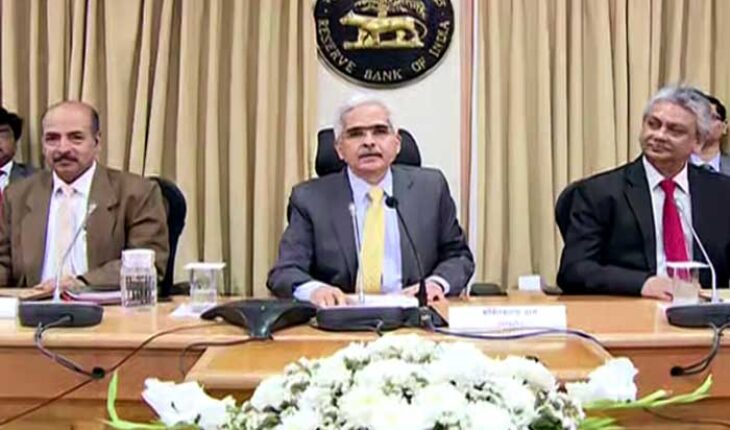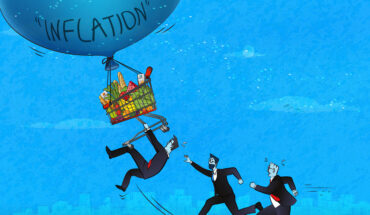
To maintain the pace of growth, it is important that the repo rate is not increased further. Therefore, in the monetary review concluded on October 6, the Reserve Bank maintained the repo rate at 6.5 percent for the fourth consecutive time. Earlier, the Reserve Bank had increased the repo rate to 6.5 percent in the monetary review of February 2023.
The repo rate was increased by 2.50 percent in 6 times during May 2022 to February 2023, due to which inflation, global geopolitical crisis, high price of crude oil etc. in the international market, but except inflation, there is not much impact of other factors on growth, because the lethality of other issues has reduced significantly. However, an increase in the scope of the war between Israel and Hamas may increase some problems. Therefore, the Reserve Bank wants to implement various measures to accelerate the growth rate. In this sequence, in the recent monetary review, all the members of the Monetary Policy Committee (MPC) voted unanimously in favour of keeping the repo rate unchanged.
By keeping the repo rate unchanged by the Reserve Bank, the loan instalments of existing borrowers will not increase, and businessmen and the public will be able to get loans at cheaper rates. Due to fluctuations in the repo rate, the loan instalment increases or decreases, whereas if it is kept constant, the loan rate generally also remains the same.
The Reserve Bank tries to fight inflation by increasing the repo rate. When the repo rate is high, banks get loans from the Reserve Bank at higher interest rates, due to which banks also give loans to customers at expensive rates. By doing this, the liquidity of currency in the economy reduces and due to people not having money in their pockets, the demand for goods decreases and due to high prices of goods and products, their sales decline, which leads to softness in inflation. Similarly, when the economy is weak, efforts are made to increase the liquidity of currency in the market to accelerate the developmental works and for this the repo rate is cut, so that banks can get loans from the Reserve Bank at cheaper interest rates and after getting the loan, banks can also give loans to the customers at cheaper interest rates.
In the monetary review, the Reserve Bank Governor also released inflation and gross domestic product (GDP) estimates. According to the Central Bank, inflation may be 5.4 percent in the financial year 2024. Earlier the Reserve Bank had estimated inflation to be 5.1 percent. The Reserve Bank has projected real GDP to grow at the rate of 6.5 percent in fiscal year 2024 and 6.6 percent in fiscal year 2025. The Reserve Bank had earlier also predicted the GDP to grow at the same rate in the financial year 2024 and financial year 2025.
According to Reserve Bank Governor Shri Shakti Kant Das, the fight against inflation will continue, because the pace of inflation has still not reduced. The Central Bank has set a target of keeping inflation at 4 percent instead of lower-level 2 percent & higher-level 6 percent, but for this the Reserve Bank will have to depend on many reasons like, weather movements, international factors like Global Geo-Political crisis, price of crude oil in the international market etc. It will not be easy for the Reserve Bank to achieve this target, because inflation rate of many food items are still high.
Retail inflation came down to 6.83 percent in the month of August, which was at the level of 7.44 percent in the month of July. However, due to lower prices of vegetables in the month of September, retail inflation came down to 5.02 percent, which is within the upper limit of 6 percent tolerance limit set by the Reserve Bank. In the month of September, the inflation rate in rural areas was 5.33 percent. Although retail inflation has come down in the month of September, the inflation rate of many food items has increased. The inflation rate of sugar has increased to 4.52 percent, which was 3.8 percent in the month of August. The inflation rate of pulses has increased to 16.38 percent, which was 13.04 percent in the month of August. In September, the inflation rate of spices reached above 23 percent. Despite all efforts by the government to control the price of wheat, its price is increasing, and its inflation rate has reached a level of more than 4 percent in October. The price of rice has also increased by 22 percent in one year. The inflation rate of grains is around 11 percent. The inflation rate of fruits is 7.30 percent. Retail inflation in Rajasthan was the highest in the country at 6.53 percent, while Haryana was at second place with 6.49 percent and Karnataka was at third place with 6 percent.
There has also been an improvement in the industrial production rate in the month of August. This month this rate has been 10.3 percent, whereas in the month of July it was only 6 percent and in the month of June it was 3.7 percent. The improvement in industrial production rate shows that demand and supply have picked up and economic activities are mounting.
Retail inflation came down to 6.83 percent in the month of August, which was at the level of 7.44 percent in the month of July. The main reason for the decline in inflation was the weakening in the prices of vegetables. Wholesale inflation reached minus -0.52% in the month of August. In the month of July, it was 1.36 percent. This is the fifth consecutive month when wholesale inflation remained negative i.e., below zero. The main reasons for the difference between retail and wholesale inflation are transportation expenses, level of city, area of city, price of fuel in the international market, etc. Therefore, the government can reduce the difference between wholesale and retail inflation through its machinery.
Inflation is directly related to purchasing power. For example, if the inflation rate is 7 percent, Rs 100 earned will be worth just Rs 93. Therefore, people should invest only keeping inflation in mind. Otherwise, the value of your money will reduce. Therefore, it is important to keep inflation under control to maintain the pace of growth.
Inflation has remained at a high level for the last few months, which is hindering development. In such a situation, the Reserve Bank has kept the repo rate unchanged. If the Reserve Bank had increased the repo rate to control inflation, then inflation would have reduced, but it would have also reduced the pace of growth, because the increase in repo rate. Reserve Bank by doing; Gives loans to banks at higher interest rates and due to this, banks also give loans to the public and businessmen at higher interest rates, due to which the prices of various products increase and their demand decreases. Such a situation slows down the pace of development. Therefore, the Reserve Bank wants to move forward by maintaining a balance between inflation and growth, so that the Indian economy remains strong, and the common people and businessmen do not have to face much difficulties.
Satish Singh, Ahmedabad based Senior Columnist,Views are personal.




